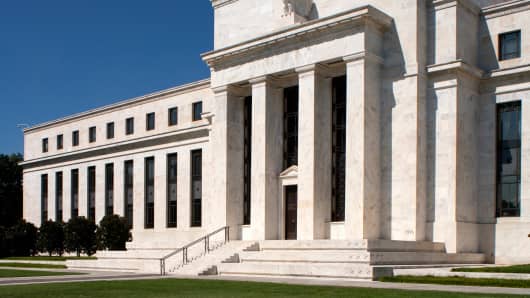Billions of dollars have been pumped into economies across the globe as central banks try to weather financial storms, but this loose monetary policy has led to fears that any end to asset purchases may see the 5-year bull market rally dissipate.
Investment advisory firm Wells Capital has other ideas; its research suggests that any sudden rise in bond yields after an exit from loose monetary policy by the Federal Reserve will benefit stocks and needn't be feared.
(Read More: Wall Street Betting Fed Keeps QE Coming: CNBC Survey)
"We may finally be nearing a time in this recovery when bond yields begin to rise and the Federal Reserve begins to reverse its easy money policies. However, for stock investors this change may prove far less challenging than most anticipate," it said in a research note on Friday.
"Indeed, if history is any guide, because this bond market cycle begins from record low yields, for a time, a period of "rising" bond yields may actually boost stock market valuations."
The Federal Reserve announced in December that it would buy $45 billion in additional Treasurys every month, on top of the $40 billion a month in mortgage-backed securities it has already committed to, taking the total size of its QE (quantitative easing) program to $85 billion a month.
Market watchers have since listened carefully during press conferences and studied meeting minutes for any indication that policy may change and record sub-2 percent yields on 10-year Treasurys may start to rise.
(Read More: Bernanke Drives Bull Market to 4th Birthday, 130 Percent Gain)
But if the post-war era is any guide, a period of rising bond yields from current levels may be just what is needed to "improve" stock market valuations, Wells Capital said.
"Since 1950, there have been two distinct relationships evident between bond yield movements and the price-earnings (PE) multiple on the U.S. stock market," it said.
"When the 10-year government bond yield has been above 6 percent, rising elds have depressed PE (price-to-earnings) multiples, but whenever the 10-year yield has been below 6 percent, rising yields have typically been associated with 'higher' PE multiples."
(Read More: Fed Keeps Easing, Not Worried About Stock Bubble)
Many expect bond yields to finally begin rising again in the next few years which may suggest the need for increased caution in the stock market, it said.
For a period however, like it has throughout the post-war era, Wells Capital said a change in the direction of the bond market from record low yields could actually signal the beginning of a new phase in this stock market run—one driven by rising PE valuations, it said.
—By CNBC.com's Matt Clinch



